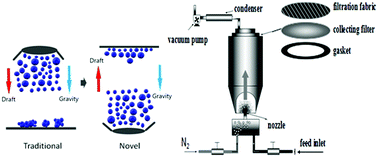Synthesis of the microspheric cocrystal CL-20/2,4-DNI with high energy and low sensitivity by a spray-drying process
Abstract
A novel microspheric cocrystal consisting of a 1 : 1 molar ratio of 2,4,6,8,10,12-hexanitro-2,4,6,8,10,12-hexaazaisowurtzitane (CL-20) and 2,4-dinitroimidazole (2,4-DNI) was synthesized by a spray-drying process utilizing our self-developed equipment, which is economical, productive and green. The yield of CL-20/2,4-DNI was 97.65%, far above other spray-drying methods. The structure of the cocrystal and its intermolecular interactions were calculated by Materials Studio program; the cocrystal CL-20/2,4-DNI was most likely to crystallize in P21/C group, and density of states analysis confirms that C–H⋯O interactions were the main force in forming the cocrystal. PXRD combined with DSC and FT-IR results also confirm the cocrystal CL-20/2,4-DNI. The PXRD measurements show that CL-20/2,4-DNI has a new crystal phase, which indicates that the cocrystal, rather than physical mixture, was formed, and the IR spectra gives supplementary confirmation for the existence of C–H⋯O bonds between CL-20 and 2,4-DNI. The DSC shows the thermal decomposition peak temperature of 257.2 °C, which suggests that the microspheric CL-20/2,4-DNI has good thermal stability. Moreover, the SEM results show that microspheric CL-20/2,4-DNI cocrystals with D50 of 518.25 nm were prepared, and the cocrystal exhibits surprisingly low sensitivity, up to 60.4 cm, in impact drop tests. The predicted detonation velocity of CL-20/2,4-DNI is 9324 m s−1 higher than that of HMX. CL-20/2,4-DNI is a promising explosive that can be applied in weapons.



 Please wait while we load your content...
Please wait while we load your content...